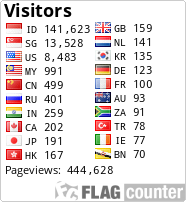Literasi Digital Pembelajaran Pendidikan Agama Islam Pada MA Nurul Qur’an Bogor
DOI:
https://doi.org/10.32729/edukasi.v21i2.1618Abstract
Many madrasas do not yet have the readiness and ability to implement digital literacy in learning Islamic Religious Education (PAI) in its various aspects, such as aspects of teacher readiness, infrastructure, curriculum, learning strategies, and the lack of culture in implementing digital literacy, especially private madrasas which have many limitations. . supposedly, the development of advances in digital technology that penetrates all lines of life including the education sector, learning should be carried out by utilizing the presence of digital technology as a means to support smooth learning. This study uses qualitative methods, with phenomenological and sociological approaches. Data collection was carried out through in-depth interviews, participatory observations, and document studies. The results of the study show that the implementation of Digital Literacy in PAI Learning at MA Nurul Qur'an has worked well, which can be seen in several indicators, such as: digital-based PAI learning can run smoothly; madrasas provide support in the form of policies on providing facilities, procuring teachers, and learning funding; in practice PAI learning is carried out web-based and social media which is carried out through class learning, laboratory learning, and online; in PAI learning, monitoring and evaluation have been carried out by the head of the madrasa and teachers both routinely and incidentally.
Downloads
Published
Issue
Section
License
Copyright (c) 2023 Elis Lisyawati, Mohsen Mohsen, Umul Hidayati, Opik Abdurrahman Taufik

This work is licensed under a Creative Commons Attribution-ShareAlike 4.0 International License.
Copyright Notice
Authors who publish with this journal agree to the following terms:
- Authors retain copyright and grant the journal right of first publication with the work simultaneously licensed under a Creative Commons Attribution License that allows others to share the work with an acknowledgement of the work's authorship and initial publication in this journal.
- Authors are able to enter into separate, additional contractual arrangements for the non-exclusive distribution of the journal's published version of the work (e.g., post it to an institutional repository or publish it in a book), with an acknowledgement of its initial publication in this journal.
- Authors are permitted and encouraged to post their work online (e.g., in institutional repositories or on their website) prior to and during the submission process, as it can lead to productive exchanges, as well as earlier and greater citation of published work (See The Effect of Open Access).
EDUKASI Â have CC-BY-SA or an equivalent license as the optimal license for the publication, distribution, use, and reuse of scholarly work.
In developing strategy and setting priorities, EDUKASI Â recognize that free access is better than priced access, libre access is better than free access, and libre under CC-BY-SA or the equivalent is better than libre under more restrictive open licenses. We should achieve what we can when we can. We should not delay achieving free in order to achieve libre, and we should not stop with free when we can achieve libre.
 EDUKASI  is licensed under a Creative Commons Attribution 3.0 International License
You are free to:
- Share — copy and redistribute the material in any medium or format
- Adapt — remix, transform, and build upon the material for any purpose, even commercially.
- The licensor cannot revoke these freedoms as long as you follow the license terms.









